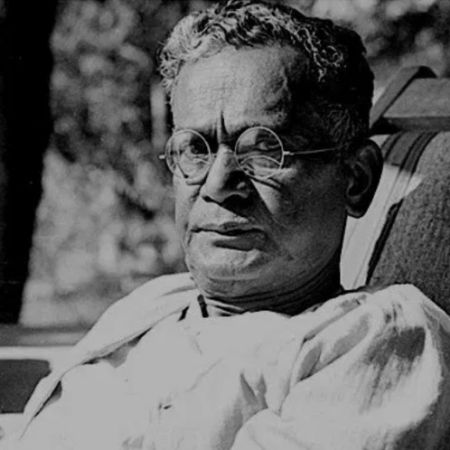Nandlal Bose was born in December 1882 in Bihar. A protege of Havell and Abanindranath, he is today regarded as one of the most prominent artists of the modern India. Nandlal Bose attended Calcutta Government College of Art between 1905 and 1910. He joined Abanindranath's Art School, where he was guided, initially, by Harinarayan Basu and Iswari Prasad and later on, by Abanindranath himself Nandalal incessantly kept learning to paint, picking up model-drawings, still-life, etc. from his cousin Atul Mitra, copying the works of European masters (like Raphael's Madonna) and the style of Raja Ravi Verma's (as seen in Mahashveta). When he was yet feeling his way, Bose was elated when he suddenly recognized his future Guru, Abanindranath Tagore, from his paintings like 'Buddha' 'Sujata' and 'Bajra-Mukut' The historic artistic tradition of India coupled with several contemporary inspirations gave birth to an overlapping of styles in Nandlal's creativity.
His school project of copying the Ajanta murals lent translucence and a classical linearity to his style. Similarly, the emphasis on a unity between art and natural rusticity during the Kala Bhavan experience afforded the flat spaces of Mughal and Rajasthani traditions to his work, while the Sino-Japanese influences imparted complexity to his soulful washes. The Sabari cycle of temperas, with their thick opaque pigments, exhibit a post-impressionist inheritance, at the same time giving an expressionistic impact with coarse, belligerent strokes and jagged areas. A transition from figuration to a dominance of landscapes was also spotted in his works in the 1930's. Bose's versatile experimentation blended all such inspirations beautifully in his series on the 'Chaitanya', while the rural Bengali 'pata' influenced his vibrant depiction of village life in the 'Haripura-Posters'. His skillful combination of stylization with the realistic pinnacled in the 'Natir-Puja Murals' and the free and sparse preparatory drawings.
Internally restless, Nandlal Bose always carried with him a stack of blank cards, a slab of ink and brush. Ever sensitive to the stimuli surrounding him, he used to give in to his impulses to record these, recall old images and invent new ones, through small spontaneous sketches in monochrome. Nandalal Bose always kept the habit of realistic sketching on the spot and doing finished drawings of sceneries, people, animals and vegetation. Fundamental directness, seasoned detail, a convincing overall finish and emotion marked his expression. Bose was relegated at times as a partisan idol, a prominent leader of the nationalist backlash against colonialism. Yet despite his nationalistic bent, Bose was not a defensive antagonist. He aimed to nourish the source streams of India's creative genius, so as to make its stand with the world healthy and fruitful.
In addition to the impact of his articulate creativity on the art of India for all time to come, Nandalal Bose's impression on his students was immense and through them it suffused all over the country.
He died on April, the 16th 1966, in Calcutta.





